If after you upgrade your Windows 11/10 laptop to a newer build and you notice that the Battery Power mode Performance Slider is missing or greyed out, then this post is intended to help you. In this post, we will offer suggestions you can try to help you remediate this issue.
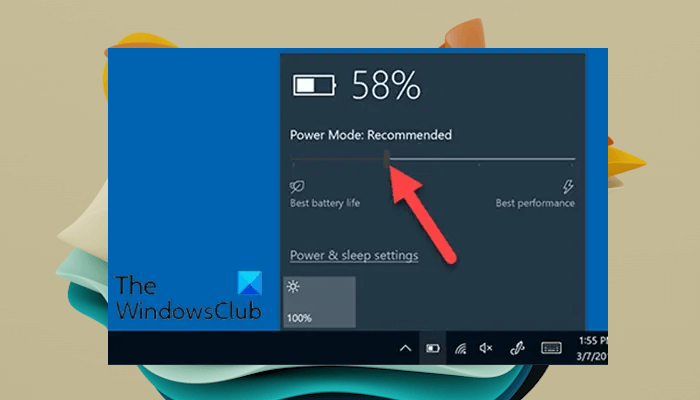
Battery Power Mode Performance Slider is missing or greyed out
If the Battery Power Mode Performance Slider is missing or greyed out, you can try our recommended solutions in the order presented below and see if that helps resolve the issue.
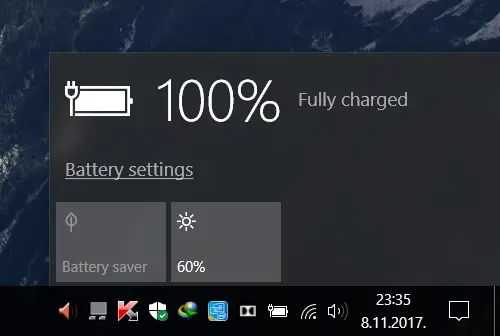
- Select the Balanced power plan
- Turn off the Battery Saver
- Restore the missing Default Power Plans
- Run SFC and DISM scan
- Perform a Fresh Start, In-place upgrade repair, or Cloud Reset
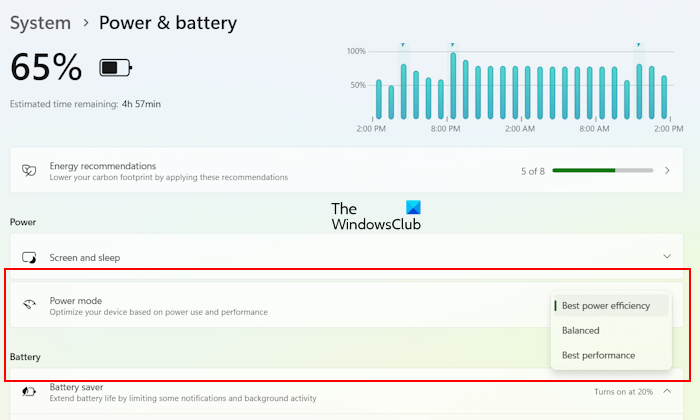
Windows 11 does not have a Power Mode Slider. Hence, if you click on the battery icon on the Taskbar notification area, you will not see this slider there. However, the Battery Saver is still available there in Windows 11. In Windows 11, you can change the Power Mode via Settings. Open Windows 11 Settings and go to Power & battery. Now, click on the Power Mode drop-down menu to select the desired power mode.
Let’s take a look at the description of the process involved concerning each of the listed solutions.
1] Select the Balanced power plan
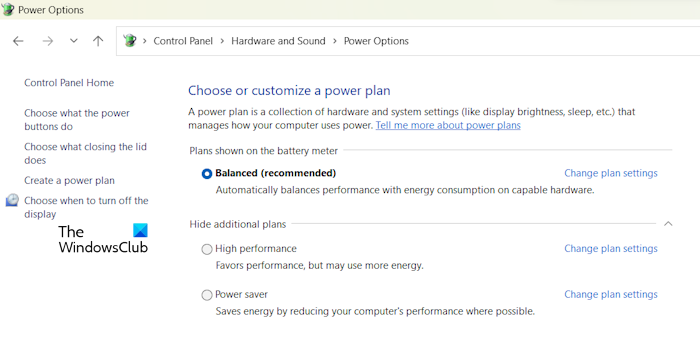
If you have a missing battery slider after an upgrade, it’s likely because you’re using the High-Performance power plan. Although it shouldn’t work like this it seems that if the high-performance plan is enabled, the battery slider disappears. The solution here simply requires you to select the Balanced power plan and the slider will come back.
You can try the next solution if this solution fails to resolve the issue.
2] Turn off the Battery Saver
This solution requires you to turn off the Battery Saver. Windows 11/10 laptops have a Battery Saver feature that extends battery life by limiting some notifications and background activities. The Battery Saver turns on automatically when your laptop battery drains beyond a particular percentage. You can also change this percentage in WIndows 11/10 Settings.
In Windows 10, open its settings and go to System > Battery. Now, uncheck the “Turn battery saver on automatically if my battery falls below” checkbox and see if that helps.
3] Restore Missing Default Power Plans
If the problem still persists, switch to another default power plan. If the default power plans are missing on your laptop, you can restore the missing default power plans by executing the required commands in the Command Prompt window.

Restore the missing Default Power Plans and see if that helps you. The commands to restore the missing default power plans will only work if the Modern Standby S0 mode is not activated on your system. If this mode is activated on your system, first, disable this mode, then execute the commands to restore the missing default power plans.
4] Run SFC and DISM scan
If you have system file errors, you may encounter this issue.
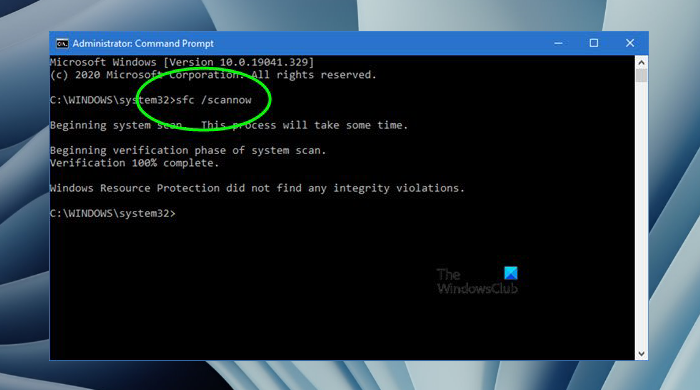
The SFC/DISM is a utility in Windows that allows users to scan for corruptions in Windows system files and restore corrupted files.
For the purposes of ease and convenience, you can run the scan using the procedure below.
- Press Windows key + R to invoke the Run dialog.
- In the Run dialog box, type notepad and hit Enter to open Notepad.
- Copy and paste the syntax below into the text editor.
@echo off date /t & time /t echo Dism /Online /Cleanup-Image /StartComponentCleanup Dism /Online /Cleanup-Image /StartComponentCleanup echo ... date /t & time /t echo Dism /Online /Cleanup-Image /RestoreHealth Dism /Online /Cleanup-Image /RestoreHealth echo ... date /t & time /t echo SFC /scannow SFC /scannow date /t & time /t pause
- Save the file with a name and append the .bat file extension – eg; SFC_DISM_scan.bat.
- Repeatedly run the batch file with admin privilege (Right-click the saved file and select Run as Administrator from the context menu) until it reports no errors.
- Restart your PC.
On boot, check if the issue is resolved; else, continue with the next solution.
5] Perform a Fresh Start, In-place upgrade repair, or Cloud Reset
At this point, if the issue is still unresolved, it’s most likely due to some kind of system corruption that cannot be resolved conventionally.
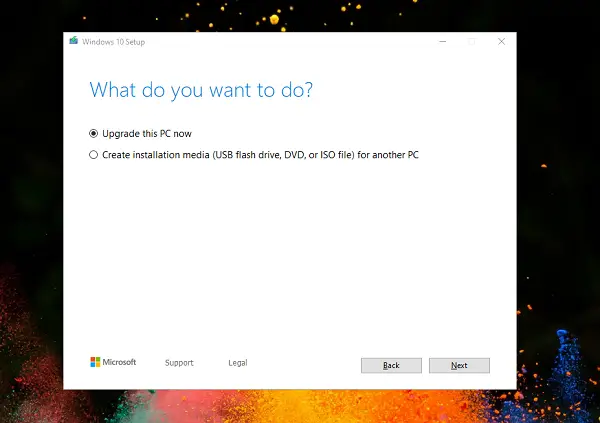
In this case, you can try Fresh Start, In-place upgrade repair to reset every Windows component. Alternatively, you can try Cloud Reset and see if that helps.
Any of these solutions should work for you!
Why has my battery icon disappeared?
If you are a Windows 10 user and the battery icon has disappeared from the Taskbar on your laptop, you might have turned it off in Windows 10 Settings. Check this and turn it on (if it is turned off). Windows 11 does not have such a setting to turn on or off the Battery icon on the Taskbar. Another cause of the missing battery icon on the Taskbar is the corrupted Battery driver. Open the Device Manager and check the status of the battery driver. Reinstalling the battery driver can help.
How do I reset my laptop battery settings?
You can reset your laptop battery by performing a hard reset. To do this, turn off your laptop and disconnect all the peripherals. Now, remove your laptop battery and press and hold the power button for up to 30 seconds. After that, insert the battery and turn on your laptop. Some laptops have a battery reset pinhole. You can also use this. Unfold the paper clip and insert it into the pinhole. You will feel that there is a button. Press that button for up to 30 seconds.
Read next: Windows laptop turns off when unplugged even with new Battery.
Leave a Reply